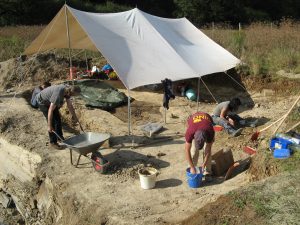From Dino to Darwin
Dinosaurs may have vanished from the face of the Earth, but in our imagination they remain alive and well.
Steve Miller, Emeritus Professor of Science Communication and Planetary Science, University College London
State Natural History Museum – Research on Dinosaur Evolution
Dinosaurs first appeared on Earth more than 230 million years ago and became extinct about 66 million years ago at the end of the Cretaceous period.
Studying the evolution and diversification of dinosaurs helps us understand how ancient ecosystems and food chains were structured, and how different organisms interacted or competed within them. These findings illustrate why some groups of animals were able to adapt successfully, while others disappeared.
In the Braunschweig research region, the State Natural History Museum carries out scientific fossil excavations in Jurassic strata at the geopoints of Schandelah and Hondelage, sometimes in cooperation with the non-profit association FUN. Among the finds are skeletal remains of marine reptiles, turtles, fish, and even pterosaurs.

Podcast Recommendation
Although they disappeared millions of years ago, everyone knows dinosaurs. But how is it possible that we know what they looked like, even though they have been extinct for so long? What happens at a real excavation site? And are chickens, as birds, actually part of the dinosaur family?
These and other exciting questions are answered by vertebrate paleontologist Dr. Ralf Kosma from the State Natural History Museum in Braunschweig. With Musa, Emilian, Leni, and Paul.
A podcast from the House of Science Braunschweig.
